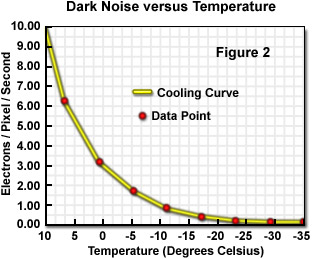

The frequency spectrum of pink noise is linear in logarithmic scale it has equal power in bands that are proportionally wide. Power density falls off at 10 dB/octave (−3.01 dB/octave). However it is not unusual in practice for spectra to be calculated using linearly-spaced frequency samples but plotted on a logarithmic frequency axis, potentially leading to misunderstandings and confusion if the distinction between equally spaced linear frequency samples and equally spaced logarithmic frequency samples is not kept in mind.

In this case a white noise spectrum that is equally sampled in the logarithm of frequency (i.e., equally sampled on the X axis) will slope upwards at higher frequencies rather than being flat. Note that spectra are often plotted with a logarithmic frequency axis rather than a linear one, in which case equal physical widths on the printed or displayed plot do not all have the same bandwidth, with the same physical width covering more Hz at higher frequencies than at lower frequencies. For example, with a white noise audio signal, the range of frequencies between 40 Hz and 60 Hz contains the same amount of sound power as the range between 400 Hz and 420 Hz, since both intervals are 20 Hz wide. In other words, the signal has equal power in any band of a given bandwidth ( power spectral density) when the bandwidth is measured in Hz. White noise is a signal (or process), named by analogy to white light, with a flat frequency spectrum when plotted as a linear function of frequency (e.g., in Hz). That is, if the sound wave pattern of "blue noise" were translated into light waves, the resulting light would be blue, and so on. The color names for these different types of sounds are derived from a loose analogy between the spectrum of frequencies of sound wave present in the sound (as shown in the blue diagrams) and the equivalent spectrum of light wave frequencies. The Federal Standard 1037C Telecommunications Glossary defines white, pink, blue, and black noise. AR noise or "autoregressive noise" is such a model, and generates simple examples of the above noise types, and more. Various noise models are employed in analysis, many of which fall under the above categories.

For instance, the spectral density of white noise is flat ( β = 0), while flicker or pink noise has β = 1, and Brownian noise has β = 2. Many of these definitions assume a signal with components at all frequencies, with a power spectral density per unit of bandwidth proportional to 1/ f β and hence they are examples of power-law noise. Some of those names have standard definitions in certain disciplines, while others are very informal and poorly defined. Other color names, such as pink, red, and blue were then given to noise with other spectral profiles, often (but not always) in reference to the color of light with similar spectra. That name was given by analogy with white light, which was (incorrectly) assumed to have such a flat power spectrum over the visible range. The practice of naming kinds of noise after colors started with white noise, a signal whose spectrum has equal power within any equal interval of frequencies.

This sense of 'color' for noise signals is similar to the concept of timbre in music (which is also called "tone color" however, the latter is almost always used for sound, and may consider very detailed features of the spectrum. Therefore, each application typically requires noise of a specific color. For example, as audio signals they will sound different to human ears, and as images they will have a visibly different texture. Different colors of noise have significantly different properties. In audio engineering, electronics, physics, and many other fields, the color of noise or noise spectrum refers to the power spectrum of a noise signal (a signal produced by a stochastic process).


 0 kommentar(er)
0 kommentar(er)
